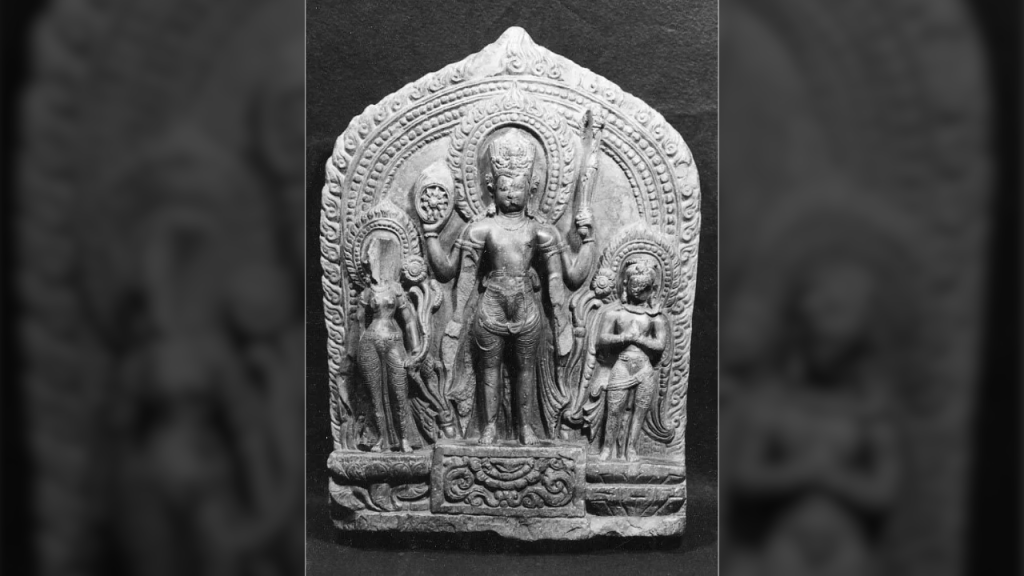Introduction
In a significant move reflecting the changing landscape of cultural repatriation, the world-renowned Metropolitan Museum of Art has announced its decision to return two precious artefacts to Nepal. These artefacts, a 13th-century wooden temple strut and an 11th-century stone sculpture of Vishnu flanked by Lakshmi and Garuda, have been in the museum’s collection for decades. This decision comes in response to evolving global perspectives on the restitution of cultural treasures to their countries of origin.
A Glimpse into the Past
The museum acquired the 13th-century wooden temple strut in 1988 and received the 11th-century stone image of Vishnu, a highly symbolic artwork, as a gift in 1995 from the personal collection of Steven Kossak, a former curator in the Met’s Asian art department. The stone sculpture, Vishnu flanked by Lakshmi and Garuda, was still on display as recently as early January. However, its online catalogue entry has since been removed.
The Significance of the Vishnu Sculpture
The Vishnu sculpture holds immense cultural and religious significance in Nepal. Deity sculptures are revered as living gods in the country, making the return of such an artwork particularly meaningful. The sculpture portrays Vishnu surrounded by a pearl-and-flame aureole, with his consort Lakshmi on one side and the eagle Garuda on the other. Vishnu stands on a raised platform adorned with lotus decorations and is depicted in his four-armed form, holding weapons—an iconic representation of the god.
A Collaborative Effort for Preservation
The decision to return these artefacts was made possible through an agreement signed by Max Hollein, the director of the Met, and Bishnu Prasad Gautam, the acting consul general of Nepal. Gautam expressed his appreciation for the museum’s dedication to preserving and promoting world cultural heritage and emphasised the collaborative efforts between Nepal and the United States in preserving their respective art and culture.
New Information Sparks the Return
The museum’s decision to repatriate these items was prompted by “new information from colleagues in Nepal,” highlighting the importance of ongoing research and collaboration in understanding the provenance of cultural artefacts. The Met is now working on the transportation arrangements for these revered pieces.
A Broader Context of Repatriation
This return is part of a broader trend in the art world, where institutions like the Met are increasingly revisiting their collections and considering the repatriation of items with uncertain provenance or contentious histories. The scrutiny on the history of ownership, or provenance, has led to more transparent and ethical approaches to handling cultural heritage.
A Year of Repatriations
Over the past year, the Met has seen several repatriations, with the Manhattan District Attorney’s Office playing a key role in seizing allegedly looted items connected to the museum. These items, estimated to be worth tens of millions of dollars, have been returned to countries such as Greece, Turkey, Italy, Egypt, Cambodia, and Nigeria. The Met has also taken steps to return artefacts based on provenance research conducted by its own scholars, exemplifying its commitment to ethical practices in the art world.
Conclusion
The Metropolitan Museum of Art’s decision to return these two culturally significant artifacts to Nepal underscores the changing dynamics of art repatriation. It reflects a commitment to ethical stewardship of cultural heritage and a willingness to collaborate with countries of origin in preserving and promoting their rich artistic traditions. As museums worldwide reevaluate their collections, the case of the Met serves as a noteworthy example of responsible custodianship in the art world.
Feature image:The repatriation of the stone relic of Vishnu has been in discussion for almost a year.COURTESY OF THE METROPOLITAN MUSEUM OF ART

Contributor






